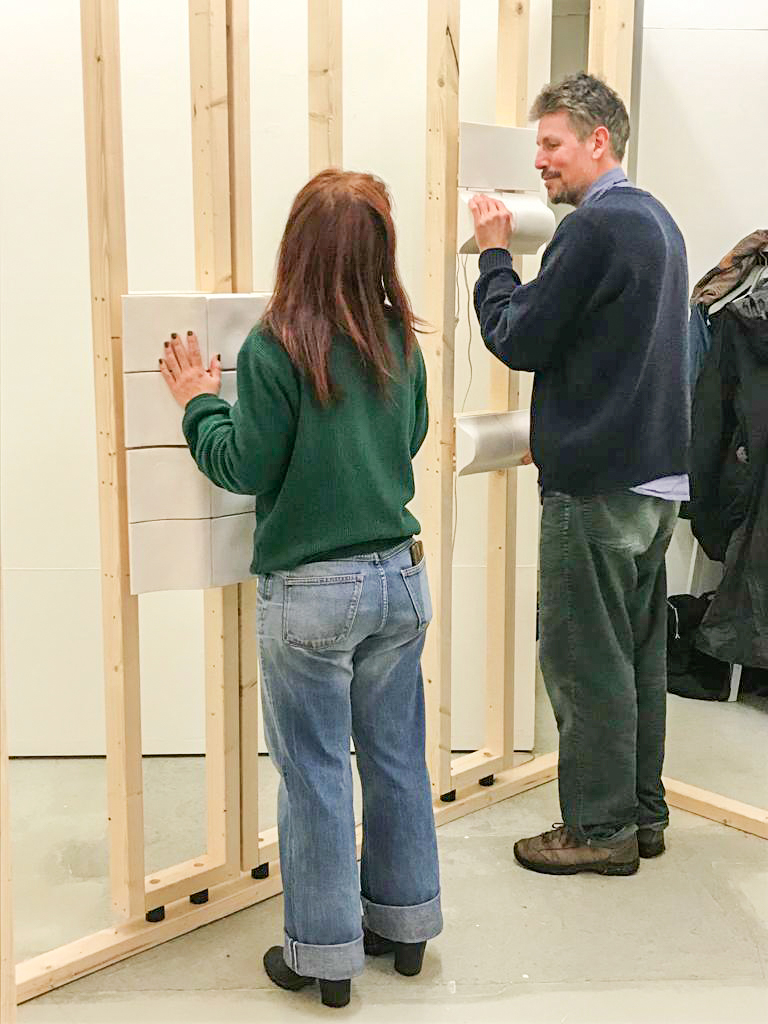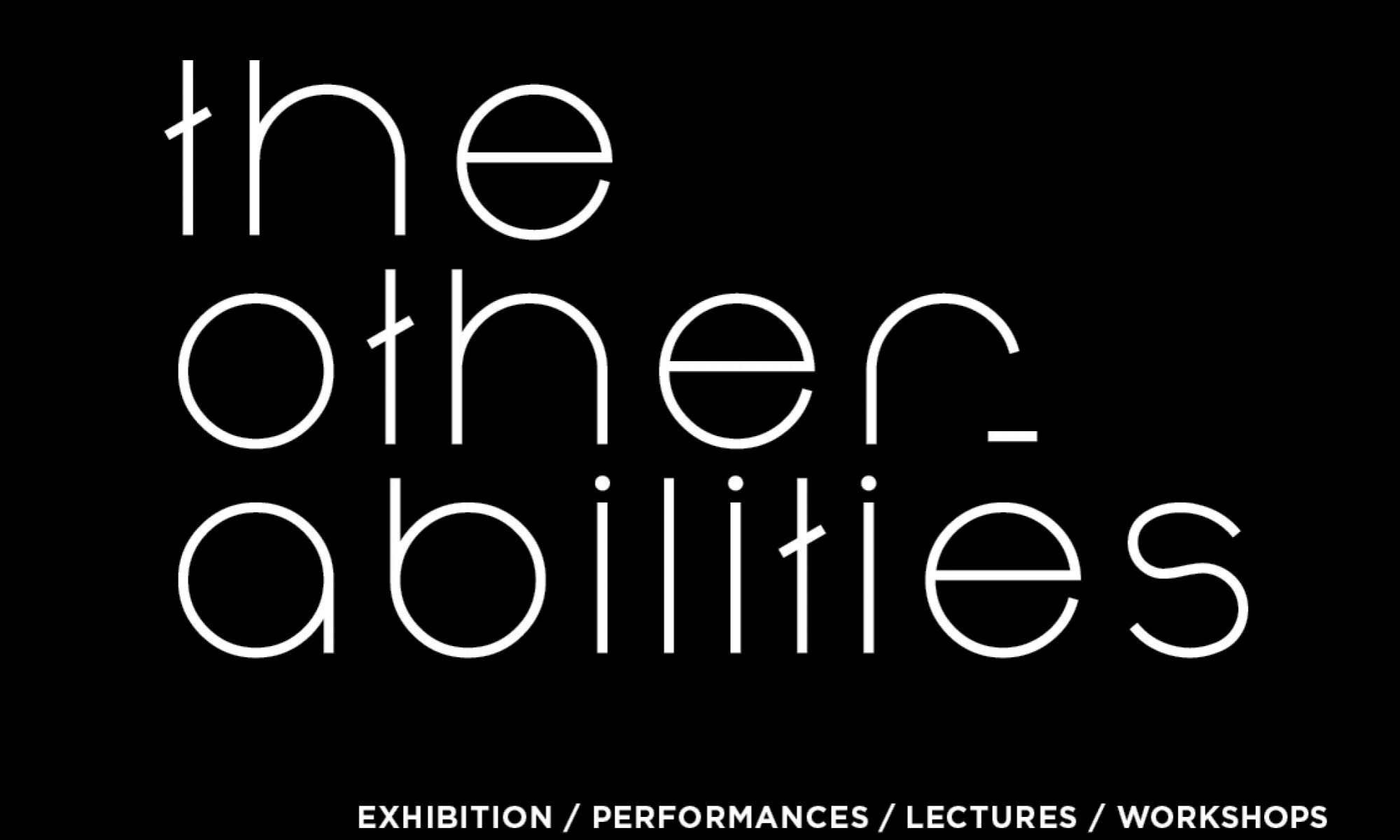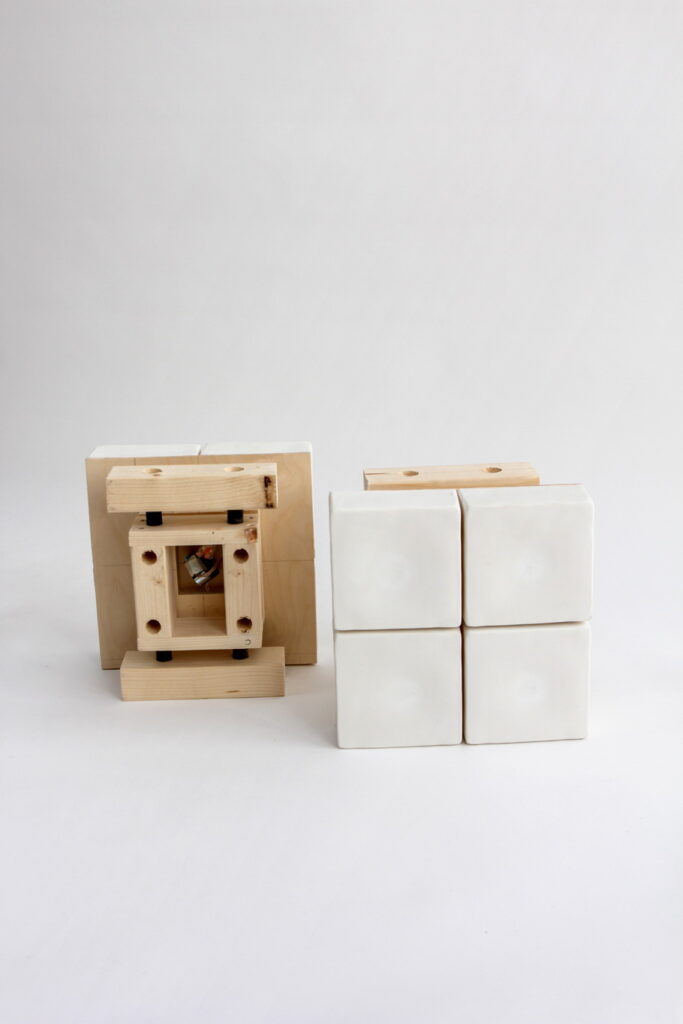
DIMENSIONS
14,5 x 29cm x depth varies per type of tile
29 x 29cm x depth varies per type of tile
MATERIALS
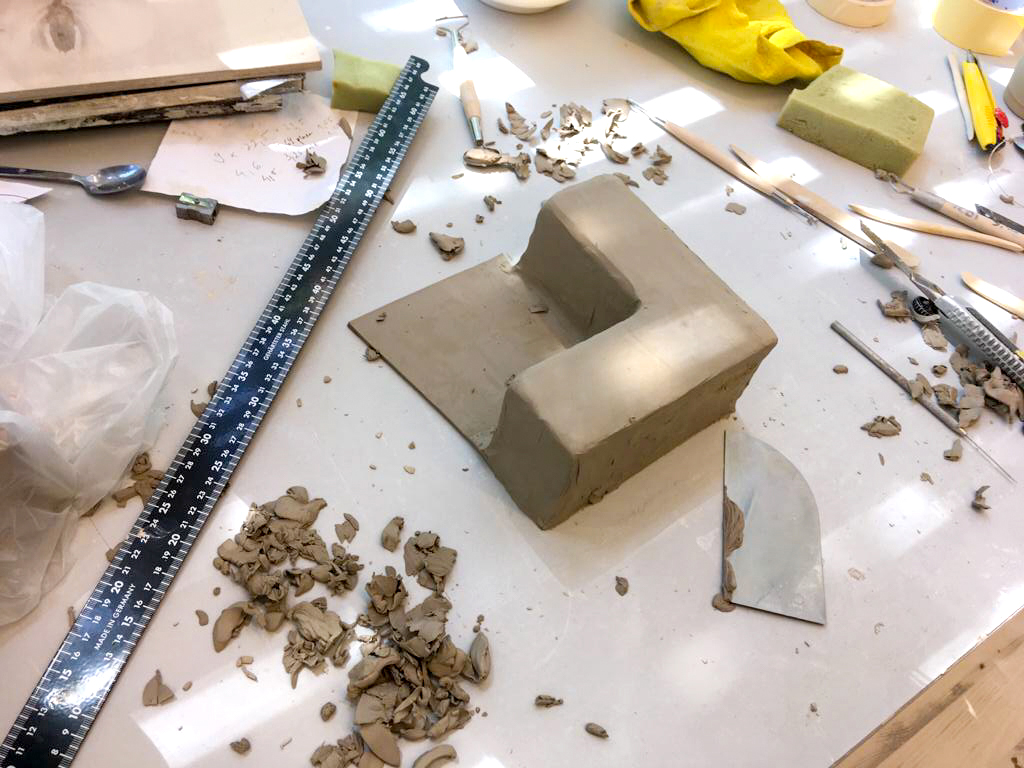
Custom-made porcelain tiles of different shapes, rubber vibration dampers, wooden plates, wooden construction and electronics (Woojer speakers, Dayton audio sound exciter speakers, amplifiers, cables)
HOW IS THE PROTOTYPE MADE?
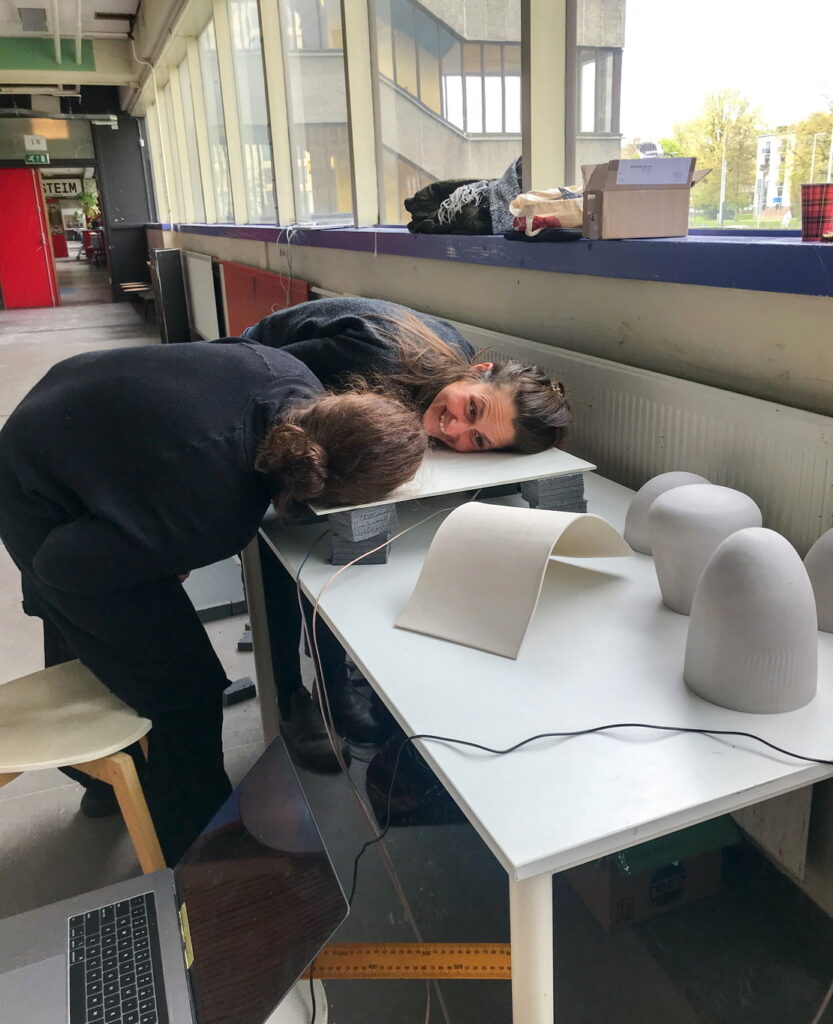
The prototype consists of two parts: the front and the back side. The front side is made out of porcelain tiles. Ceramic materials are commonly used as a cladding and tiling material in architecture (both interior and exterior) due to their resistance to wear and tear. Porcelain also has outstanding sonic qualities: it is able to conduct and transmit a very detailed tactile map of sound in its complexity, such as the frequency, rhythm, timbre or dynamics of sound. There are four types of tiles: one flat type (size/tile 14,5 x 14,5 x 0,4), and three different shapes of 3D, hollow tiles (size/tile 14,5 x 14,5 x max 7 cm).
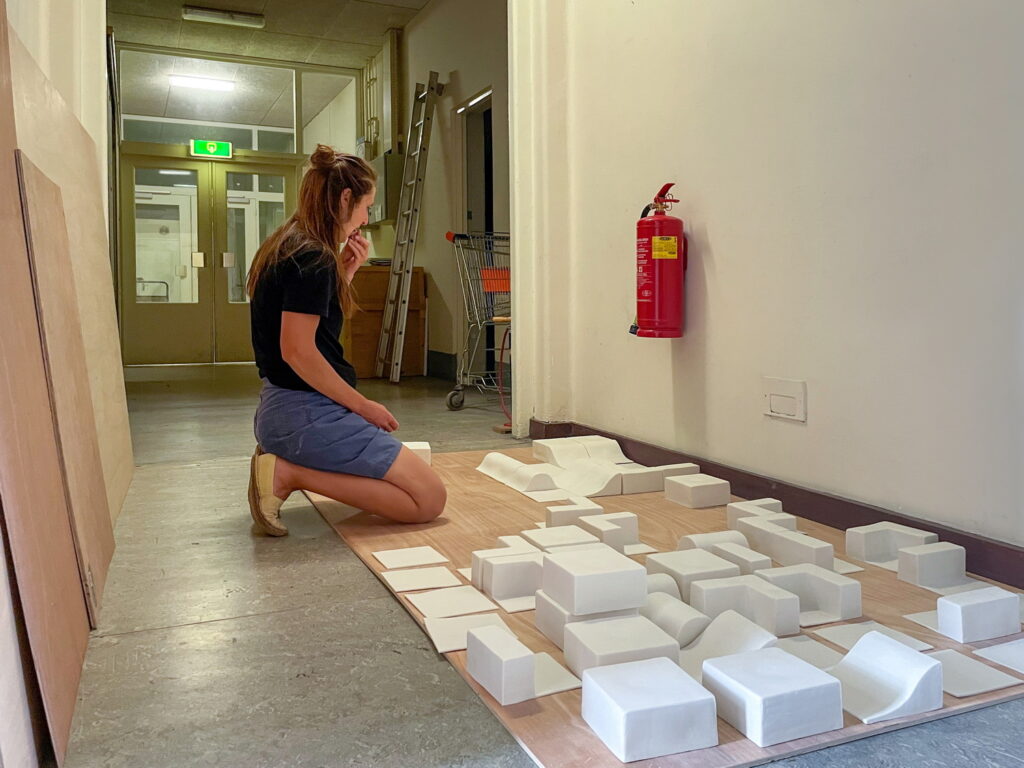
All single porcelain tiles are glued on thin wooden plates in sets of two or four tiles, forming units of 14,5 x 29 or 29 x 29 cm respectively. At the centre of each wooden plate a speaker is attached (one speaker per unit). Woojer low frequency speakers are used for 3D tiles and Dayton all range exciters for flat tiles. The units are mounted on to a vertical wooden frame so that they can be touched or leaned against, separately or many in combination.
The back side of each unit is made of wooden frames and rubber vibration dampers and is designed to minimise vibration leakage between units, as well as between the different prototypes that are mounted on the construction frame (mother frame that holds many other prototypes), while also allowing flexibility so that the membrane has some ‘give’ when pressure is applied. This system makes it possible for the porcelain membrane to be modular.
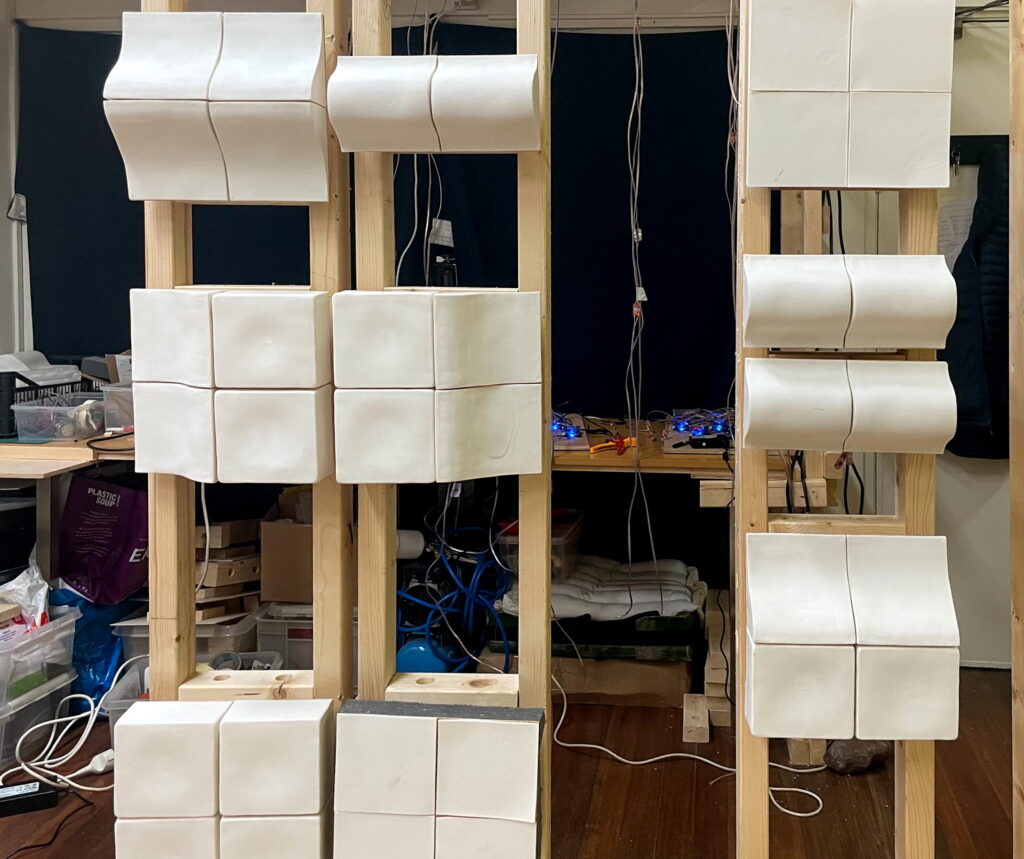
On the back of each thin wooden plate is a wooden frame (10 x 20 x 3 cm) that surrounds the speaker. This frame is attached to another frame (10 x 20 x 5 cm) by means of rubber vibration dampers. Two dampers are placed on the left-hand side, and two on the right-hand side with a calculated distance between the frames to allow a limited vertical movement of the entire tile-set without tipping at an angle. The anterior frame is attached to wooden beams by two vibration dampers at the top and two at the bottom, with a calculated distance between them to allow a limited left to right movement to each side while keeping the tiles parallel to the wall. The wooden beams are mounted on the construction frame.
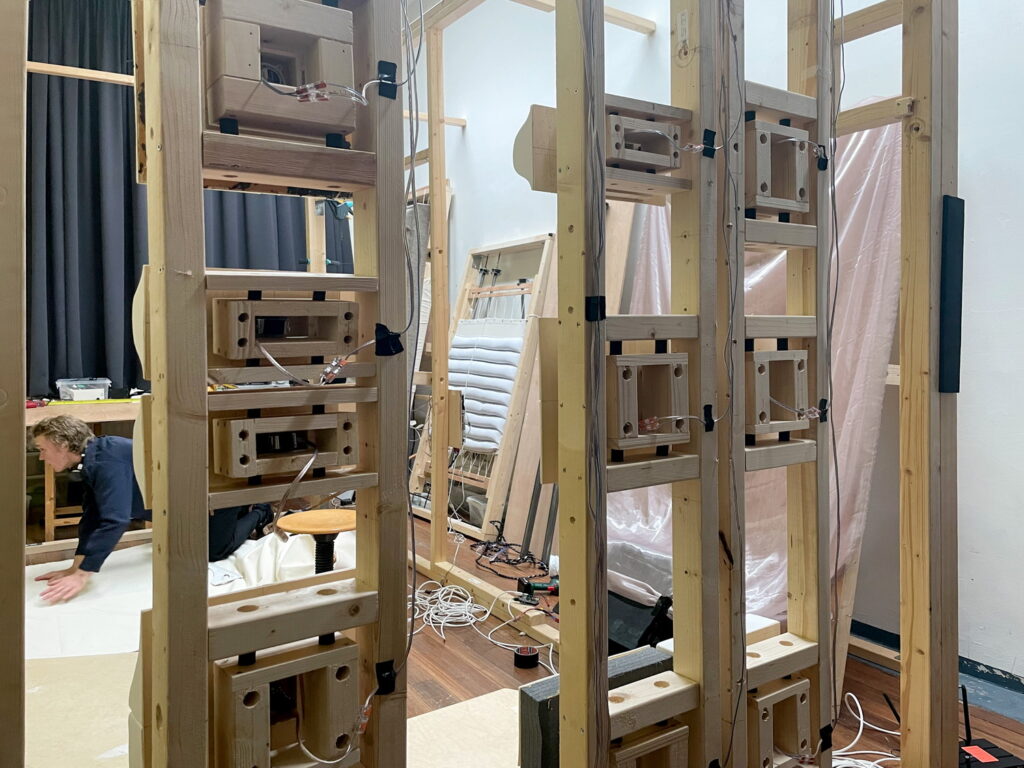
The elasticity of the overall surface – due to the rubber dampers described above – allows people to ‘fit’ the membrane wall to their body when leaning up against the tiles. A person can sublty move each unit with their body to all sides: left, right, up and down. This elasticity renders the tiles unexpectedly comfortable, despite the hardness of the porcelain.
HOW IS THE PROTOTYPE USED?
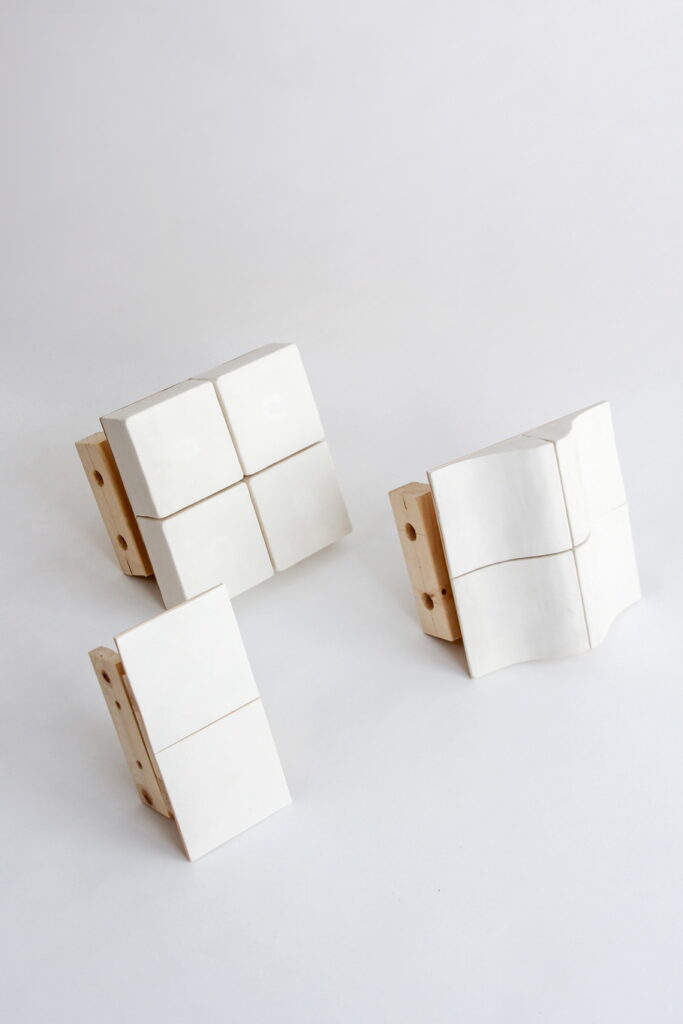
Porcelain has the quality that it can transform a large range of frequencies (low and high) into felt vibrations. The level of sensitivity is such that the human body can experience a rich variety of the different qualities of sound and vibrations. We used a modular tiling system, because this allows us to build a surface that can act as a wall and be implanted in any room.
The modular tiling system with four different types of tiles (flat and hollow) on a wooden frame can be arranged in various ways to create continuous surfaces. The three types of 3D deep, hollow tile shapes are designed for lower sound frequencies, while the thin flat tile shape is designed for higher frequencies. Therefore, wall surfaces can be created that are suitable for a person leaning against them, whether in a standing or sitting position, and that are able to cover a wide frequency range.
The combination of speakers can spread different sound sources over this surface in order to present complex sounds in a spatial manner.
Finally, the tiles are designed to be inviting for people to lean against and to accommodate various parts of the body, depending on how the different tile types are arranged on a surface.
